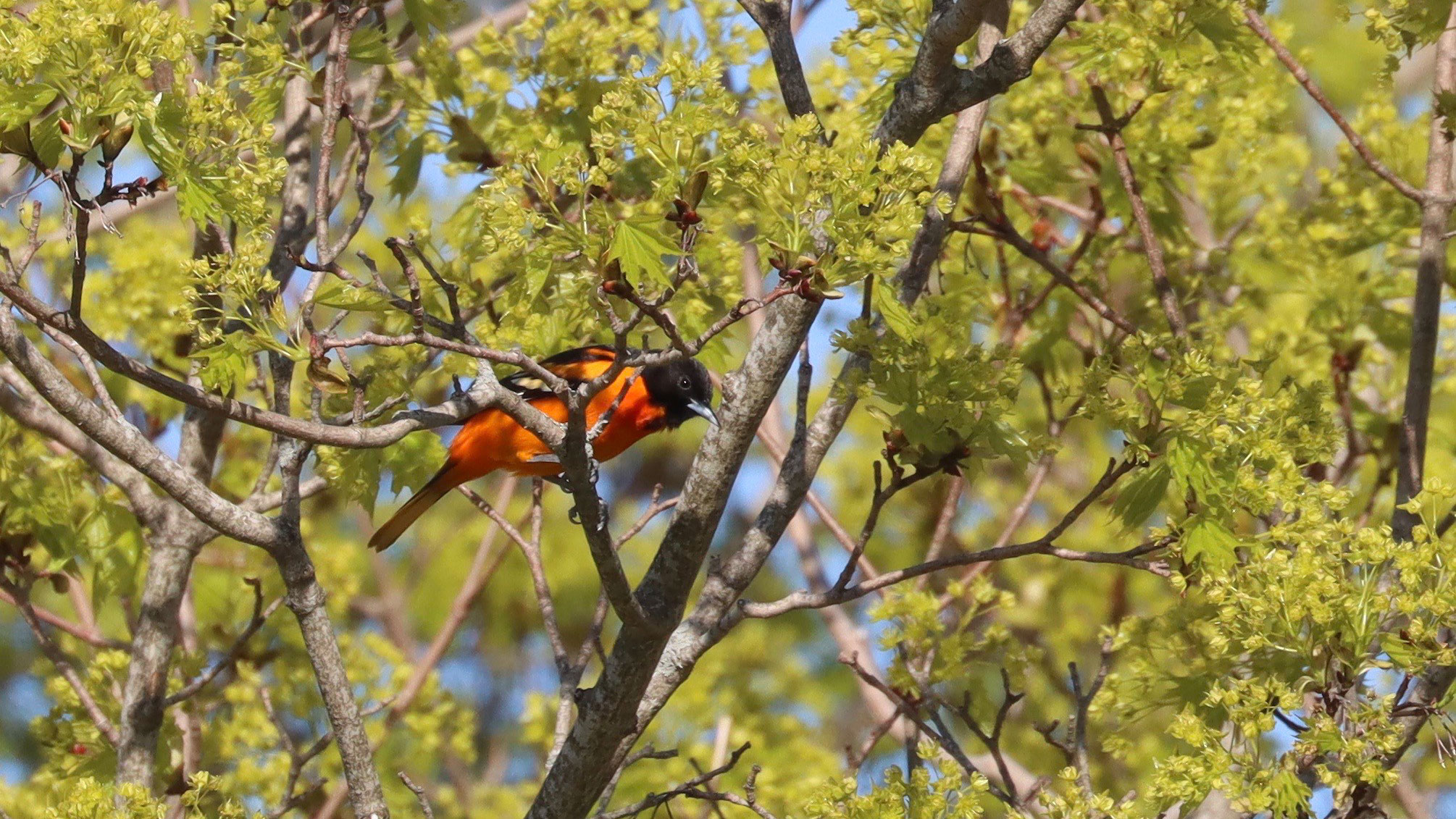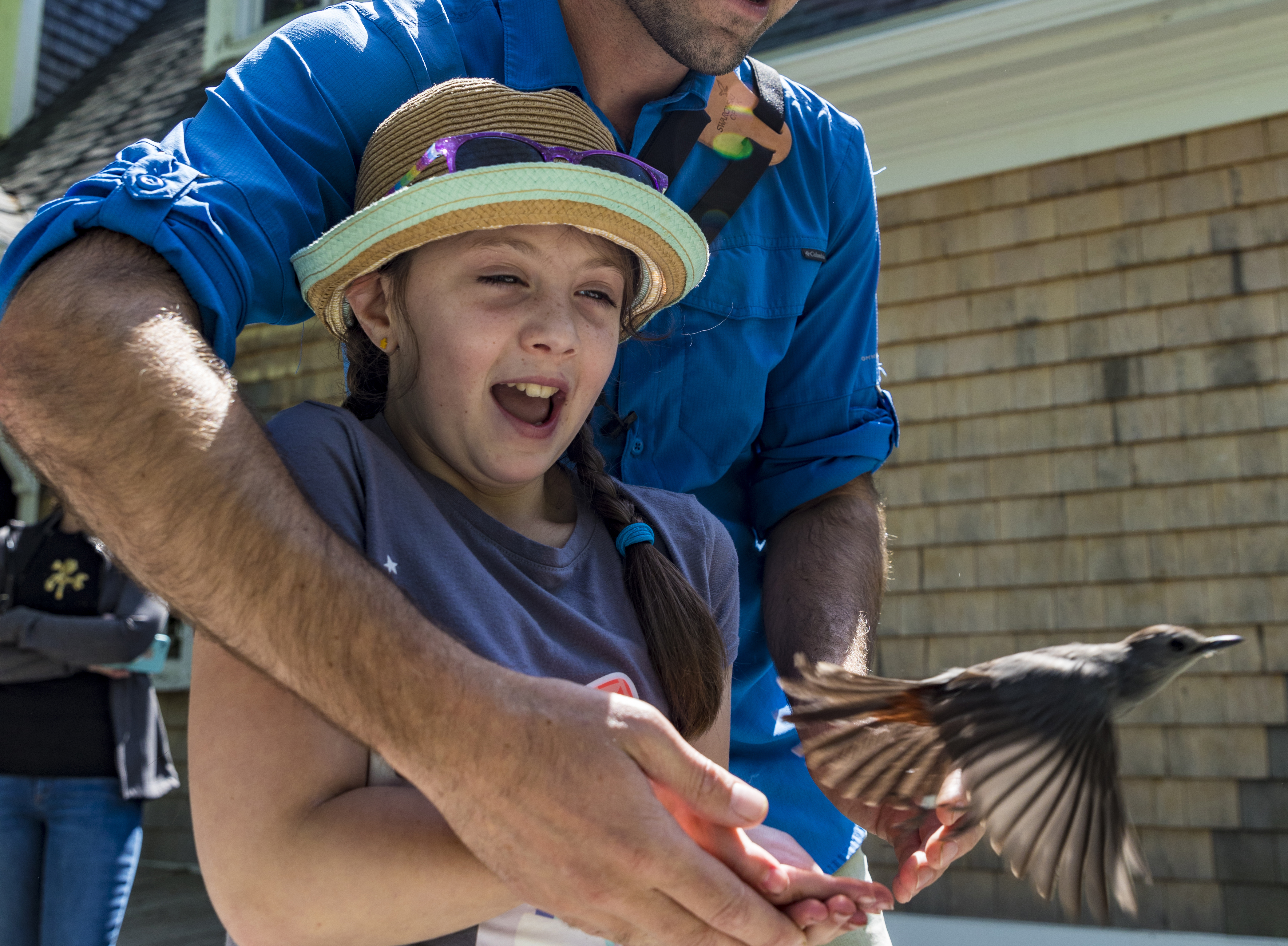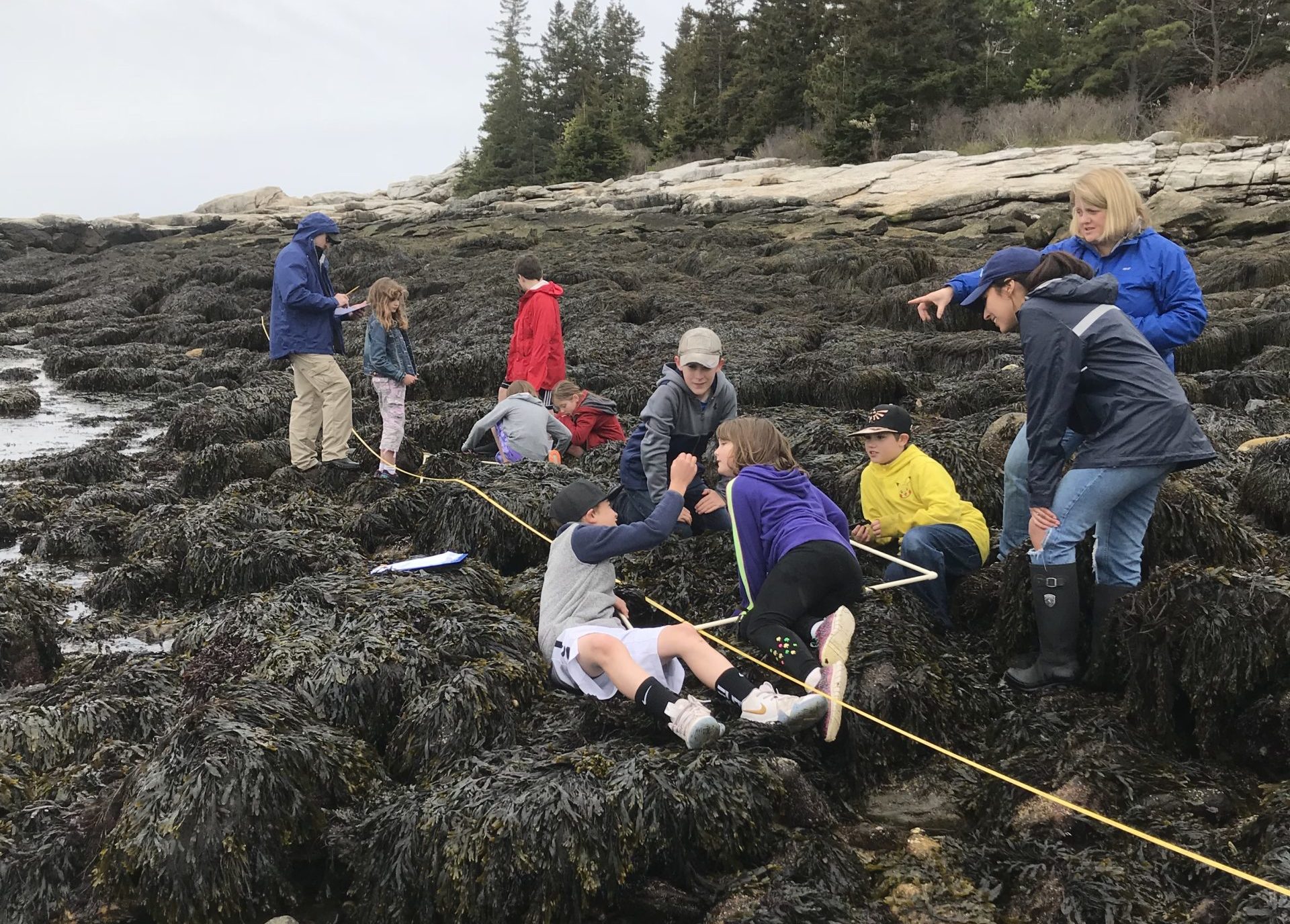By Emily Renaud
Situated along a migratory superhighway, Manomet’s headquarters serve as an ideal spot to see, catch, and study birds traveling annually from their breeding grounds to their wintering grounds and back again.
Located within the Atlantic migration path, or “flyway,” Manomet’s banding lab sits in an undeveloped patch of coastal forest and wetland habitat, a perfect stopover for weary migrating birds to rest and refuel after a long flight in the spring or fall. Offering an abundant array of natural resources, from dense fruit shrubs to leafy trees laden with juicy caterpillars, Manomet’s property is managed with birds in mind.
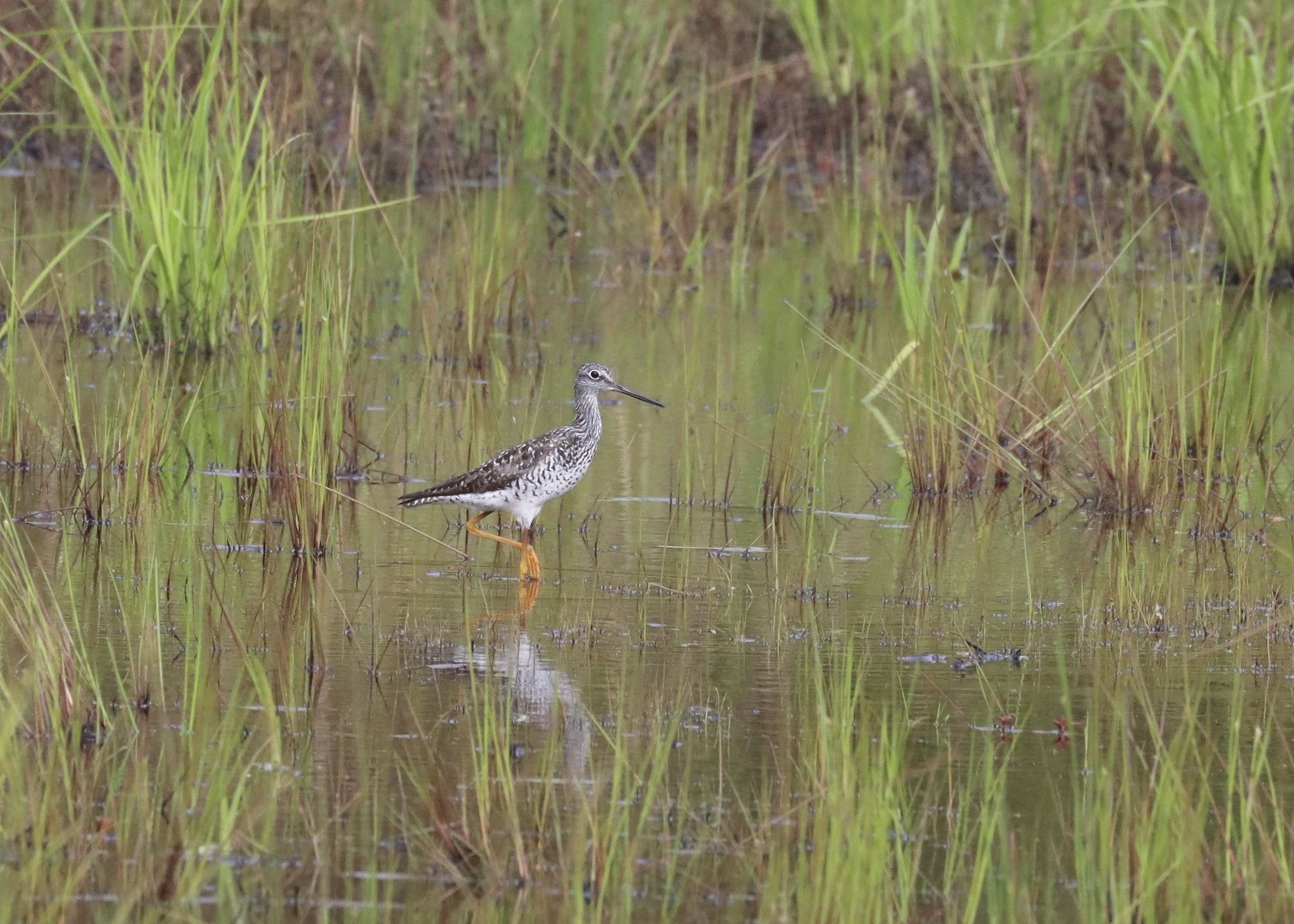
“A big part of why we manage the property the way we do is to make sure there’s a diverse set of habitats for different migrants. This includes forests, wetlands, meadows, and dense thickets. We try to cater to every kind of bird that needs a place to rest and refuel,” says Alan Kneidel, Manomet conservation biologist.
With this abundance of resources comes an excellent opportunity to study birds, both migratory and residential, that spend several days or weeks feeding and resting at Manomet’s headquarters. In the fall, the banding lab records high numbers of migrating Blackpoll Warblers that stopover for days at a time, fattening up on berries before taking off on the next leg of their journey. These birds will often go straight from Manomet all the way down to their wintering grounds in South America.
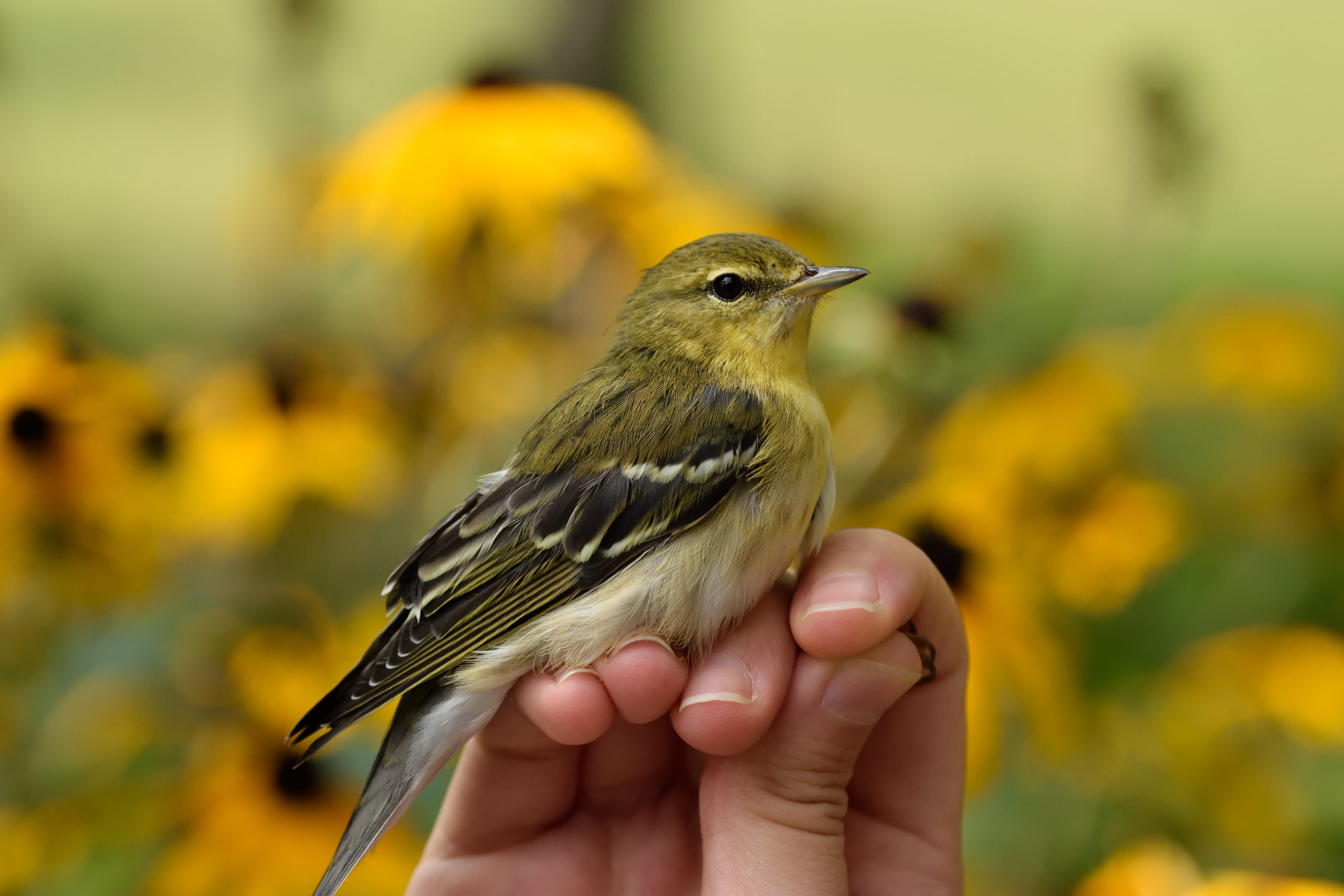
Mist nets, strung up throughout the woods of Manomet’s 40-acre headquarters property, gently catch migrating birds for our bird researchers to weigh, measure, band, and release. Sometimes, individual birds are re-caught and re-recorded during the same season. Measuring the amount of fat that recaptured birds have gained during their stay tells us how valuable Manomet’s natural resources are for hungry migrants.





 Back to all
Back to all